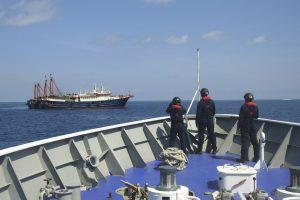“One day the great European War will come out of some damned foolish thing in the Balkans,” warned Prussia’s Otto von Bismarck in the thick of fin de siècle insouciance. Lo and behold, the Iron Chancellor’s foreboding at the turn of the new century proved eerily prescient, as “some damned foolish thing” on the margins of empires seamlessly transformed the improbable into the inevitable. What initially began as the Balkan Wars over the last vestiges of Ottoman territory in Europe quickly transmogrified into the First World War following the surreal assassination of Austria’s heir-apparent, Archduke Franz Ferdinand, by the teenage Bosnian-Serb nationalist, Gavrilo Princip.
The fateful event, which at first seemed like a relatively manageable tragedy in the greater geopolitical scheme of things, set in motion a catastrophic wave of belligerent posturing and military mobilizations by a whole host of rival powers, where ascendant hawks ached for a glorious war. “Once the mobilization button was pushed, the whole vast machinery for calling up, equipping, and transporting [millions of] men began turning automatically,” wrote Barbara W. Tuchman in her classic account of the fateful weeks in mid-1914 that would change the fate of humanity.
In many ways, the South China Sea disputes are today’s version of the early 20th century Balkans, where “some damned foolish thing” can trigger a devastating global conflict without precedence and beyond our wildest imagination. It is here in Asia’s maritime heartland, where all the ingredients of a global cataclysm are conspiring against the post-Cold War period of peace and stability in the Indo-Pacific. It’s also here where the naked edge of China’s hegemonic ambitions are on full display, with dire consequences for smaller neighbors and the broader liberal international order. Here lies the defining geopolitical dilemma of our times.
Today’s China is too big to be “contained,” a la George F. Kennan’s antidote to the Soviet threat, but it’s also becoming too voracious to be left to its own devices. If there is one thing that history teaches us, it is that neither strategic fatalism, which would risk turning the South China Sea into a Chinse lake, nor a reckless superpower rivalry, which could spark a global conflict, is advisable. So, how should we deal with the most powerful communist regime of all time? Or, as Vladimir Lenin once put it, “What is to be done?”
To prevent China’s prospective domination of a main artery of global trade, what’s necessary is nothing less than a multilateral “Goldilocks” approach, which checks Beijing’s worst instincts through an optimal combination of engagement and deterrence. Here, what is needed is a “constrainment” strategy, whereby like-minded powers and China’s besieged neighbors should collectively deploy a combination of diplomatic, economic, and military countermeasures to uphold a free and open order in the world’s most dynamic region.
What’s at stake is nothing less than the future of the 21st century global order.

































